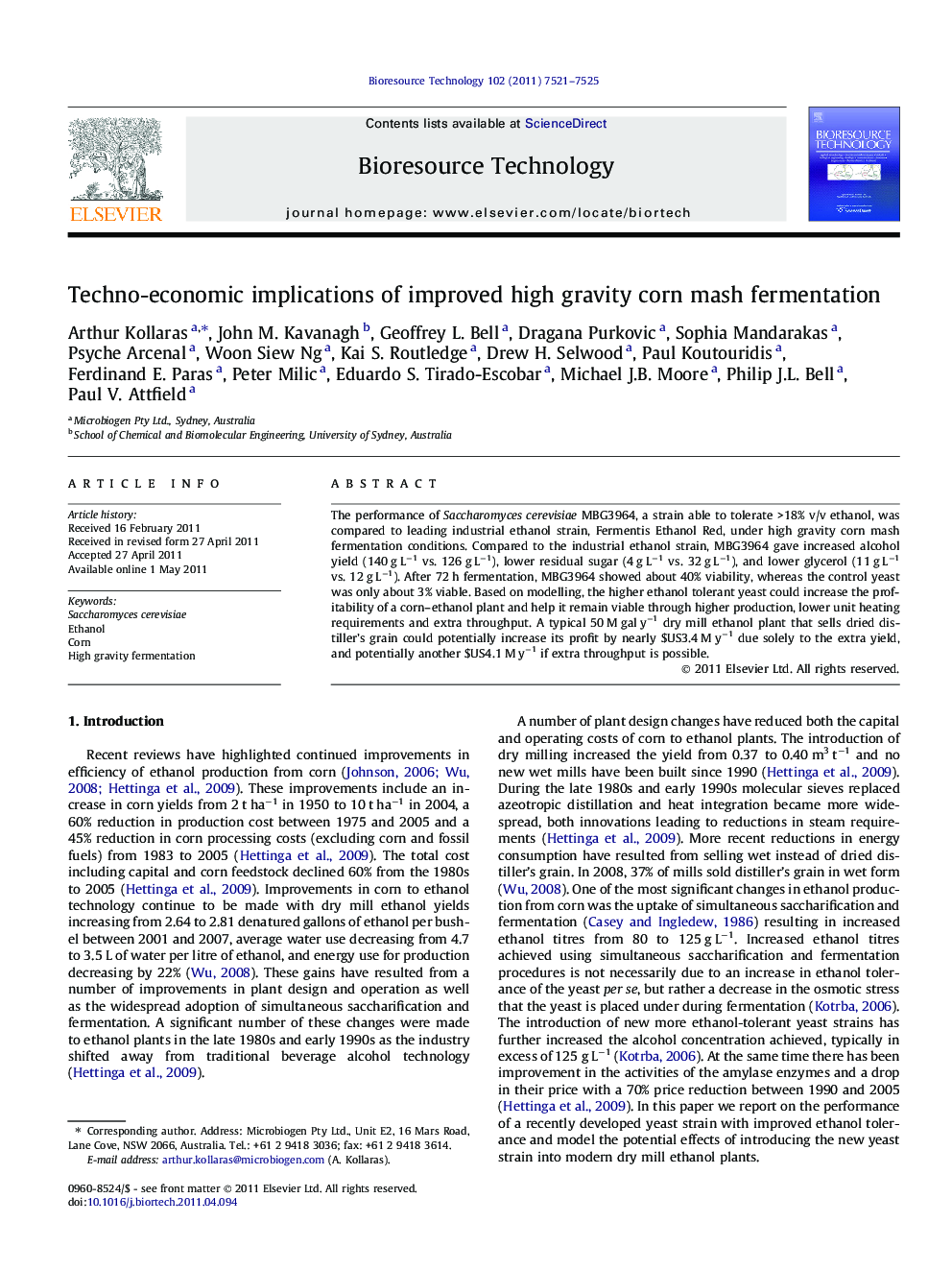| کد مقاله | کد نشریه | سال انتشار | مقاله انگلیسی | نسخه تمام متن |
|---|---|---|---|---|
| 681846 | 888965 | 2011 | 5 صفحه PDF | دانلود رایگان |

The performance of Saccharomyces cerevisiae MBG3964, a strain able to tolerate >18% v/v ethanol, was compared to leading industrial ethanol strain, Fermentis Ethanol Red, under high gravity corn mash fermentation conditions. Compared to the industrial ethanol strain, MBG3964 gave increased alcohol yield (140 g L−1 vs. 126 g L−1), lower residual sugar (4 g L−1 vs. 32 g L−1), and lower glycerol (11 g L−1 vs. 12 g L−1). After 72 h fermentation, MBG3964 showed about 40% viability, whereas the control yeast was only about 3% viable. Based on modelling, the higher ethanol tolerant yeast could increase the profitability of a corn–ethanol plant and help it remain viable through higher production, lower unit heating requirements and extra throughput. A typical 50 M gal y−1 dry mill ethanol plant that sells dried distiller’s grain could potentially increase its profit by nearly $US3.4 M y−1 due solely to the extra yield, and potentially another $US4.1 M y−1 if extra throughput is possible.
► This paper compares an improved ethanol tolerant yeast to a leading industrial ethanol strain in corn mash fermentations.
► The improved yeast had a higher ethanol yield, lower residual sugar, lower glycerol and a higher measured cell viability.
► By using an improved yeast strain, a 50 M gal y−1 dry mill ethanol plant would increase its profitability by $US3.4 to 7.5 M y−1.
Journal: Bioresource Technology - Volume 102, Issue 16, August 2011, Pages 7521–7525